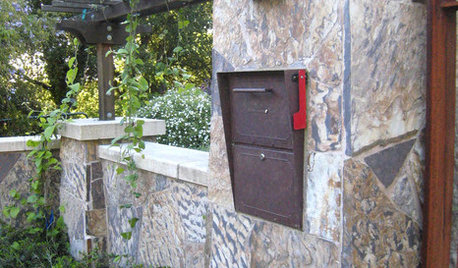Water Pipes keep clogging up
kacy27
14 years ago
Featured Answer
Sort by:Oldest
Comments (14)
kacy27
14 years agolast modified: 9 years agoRelated Professionals
Millbury Handyman · Wolf Trap Handyman · Channahon Handyman · Fairfax Handyman · Grain Valley Kitchen & Bathroom Remodelers · Bellevue Kitchen & Bathroom Remodelers · Blasdell Kitchen & Bathroom Remodelers · Glen Allen Kitchen & Bathroom Remodelers · Lyons Kitchen & Bathroom Remodelers · Patterson Kitchen & Bathroom Remodelers · Pinellas Park Kitchen & Bathroom Remodelers · Southampton Kitchen & Bathroom Remodelers · Plant City Kitchen & Bathroom Remodelers · Ridgefield Park Kitchen & Bathroom Remodelers · Travilah Kitchen & Bath Fixtureslazypup
14 years agolast modified: 9 years agokacy27
14 years agolast modified: 9 years agokacy27
14 years agolast modified: 9 years agolbpod
14 years agolast modified: 9 years agojake2007
14 years agolast modified: 9 years agoalphonse
14 years agolast modified: 9 years agokacy27
14 years agolast modified: 9 years agojake2007
14 years agolast modified: 9 years agojakethewonderdog
14 years agolast modified: 9 years agoalphonse
14 years agolast modified: 9 years agojoed
14 years agolast modified: 9 years agoshw001
14 years agolast modified: 9 years ago
Related Stories

DECKSA Family-Friendly California Yard Wises Up About Water
Pavers and unthirsty plants replace Kentucky bluegrass in a Menlo Park landscape for a family of 4
Full Story
LANDSCAPE DESIGNSoak It Up: How to Manage Stormwater in Your Landscape
Permeable paving, gravel beds and planted areas in your yard can absorb and cleanse stormwater runoff. Here's how it works
Full Story
KITCHEN DESIGNKitchen of the Week: A Burst Pipe Spurs a Makeover
Once dark and clunky, this compact kitchen in a 1962 ranch is now light, bright and cheerful
Full Story
GREEN BUILDINGWater Sense for Big Savings
Keep dollars in your pocket and preserve a precious resource with these easy DIY strategies
Full Story
BATHROOM DESIGNPowder Room Essentials to Keep Guests Happy
Set out these bathroom necessities (hello, hand towels) to make your company comfortable and your parties run smoothly
Full Story
EXTERIORSSpecial Delivery: Keeping Your Packages Safe
Online sales are up, and so is the number of boxes delivered to homes. Here’s how to keep them beyond the grasp of porch pirates
Full Story
CHRISTMAS20 DIY Ornaments to Give or Keep
From classic to quirky, easy to more involved, these Christmas ornaments will perk up your tree or make a great gift
Full Story
LANDSCAPE DESIGNHow to Move Water Through Your Landscape
Swales, underground pipes or a mix of both: There’s more than one way to distribute water in the garden
Full Story
BATHROOM DESIGN15 Ways to Warm Up Your Bathroom for Winter
Keep the chill away in body and spirit with everything from warm colors to high-end bathroom features
Full Story
WORKING WITH PROSHow to Work With a Plumber
Follow these guidelines, and your plumbing job will flow as smoothly as water through clean pipes
Full Story







alphonse